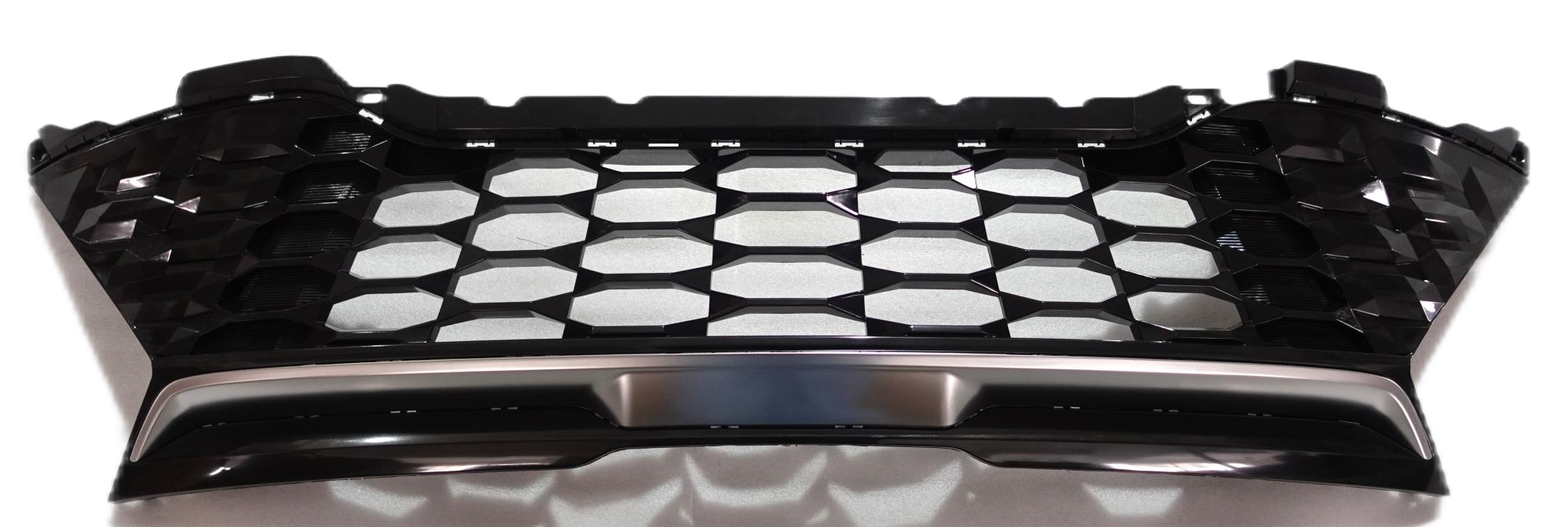The Evolution of Automotive Front-End Design
The automotive industry has witnessed a remarkable transformation in how car grilles are designed and manufactured. From the classic chrome-laden fascias of vintage automobiles to today's sophisticated mesh patterns, car grilles have become a defining feature that combines both form and function. These essential components not only protect vital engine components but also serve as a vehicle's signature aesthetic element, making a bold statement about its character and performance capabilities.
Modern car grilles represent the perfect fusion of engineering excellence and artistic expression. They're crafted to enhance aerodynamic efficiency while maintaining optimal engine cooling and protection. As automotive design continues to evolve, manufacturers are pushing boundaries with innovative materials and cutting-edge designs that elevate both performance and visual appeal.
Materials and Construction Technologies
Advanced Materials in Modern Grille Design
The latest car grilles utilize state-of-the-art materials that offer unprecedented durability and style. High-grade aluminum alloys provide excellent strength-to-weight ratios, while advanced polymers offer superior impact resistance. Carbon fiber composites are increasingly popular in premium models, delivering exceptional durability while reducing overall vehicle weight.
Manufacturers are also experimenting with novel surface treatments and coating technologies that enhance both aesthetics and longevity. These innovations include self-healing clear coats, UV-resistant finishes, and anti-corrosion treatments that ensure car grilles maintain their appearance even under harsh environmental conditions.
Manufacturing Processes and Quality Control
Contemporary car grilles benefit from sophisticated manufacturing processes that ensure precise fitment and consistent quality. Computer-aided design and manufacturing systems allow for intricate patterns and complex geometries that would have been impossible to produce just a few decades ago. Advanced injection molding techniques create seamless pieces that combine structural integrity with refined aesthetics.
Quality control measures have become increasingly stringent, with manufacturers employing multiple inspection points throughout the production process. From material testing to final assembly verification, each car grille undergoes thorough examination to meet strict performance and safety standards.

Performance and Aerodynamic Considerations
Impact on Vehicle Efficiency
The design of car grilles significantly influences a vehicle's aerodynamic performance. Modern grilles are engineered to optimize airflow, reducing drag while ensuring sufficient air reaches the radiator and engine bay. Many contemporary designs incorporate active grille shutters that automatically adjust to driving conditions, maximizing efficiency without compromising engine cooling.
Wind tunnel testing plays a crucial role in developing grille designs that balance aesthetic appeal with aerodynamic efficiency. Manufacturers invest considerable resources in finding the perfect compromise between style and performance, resulting in designs that contribute to improved fuel economy and reduced emissions.
Thermal Management Solutions
Effective engine cooling remains a primary function of car grilles, and modern designs incorporate sophisticated thermal management features. Strategic placement of air intakes and carefully calculated mesh patterns ensure optimal airflow distribution. Some high-performance vehicles feature additional cooling channels and vents integrated into the grille design to handle increased thermal loads.
Advanced computational fluid dynamics simulations help engineers predict and optimize cooling performance under various driving conditions. This scientific approach to design ensures that even the most stylish grilles maintain their functional efficiency.
Style Trends and Customization Options
Contemporary Design Elements
Current trends in car grilles showcase bold, distinctive designs that serve as brand identifiers. Large, prominent grilles have become increasingly popular, with manufacturers developing signature shapes and patterns that distinguish their vehicles in the market. Innovative lighting integration, such as illuminated grille elements and dynamic LED accents, adds another dimension to modern front-end designs.
Finish options have expanded beyond traditional chrome, with black-out treatments, brushed metals, and color-matched elements gaining popularity. These varied finish options allow manufacturers to create different trim levels and special editions that appeal to diverse consumer preferences.
Aftermarket Modifications and Personalization
The aftermarket sector offers extensive customization options for car grilles, allowing owners to personalize their vehicles' appearance. From subtle mesh pattern changes to complete front-end transformations, these modifications can dramatically alter a vehicle's character. High-quality aftermarket grilles often incorporate advanced materials and manufacturing techniques that match or exceed original equipment specifications.
Professional installation services ensure proper fitment and maintain vehicle safety systems, particularly important given the increasing integration of sensors and cameras in modern front-end designs. Many aftermarket manufacturers now provide options that are compatible with advanced driver assistance systems.
Future Trends and Innovations
Smart Integration and Technology
The future of car grilles lies in smart integration with vehicle systems. Emerging designs incorporate sensors for autonomous driving capabilities, adaptive cooling systems, and even advanced pedestrian protection features. Some manufacturers are exploring grilles with embedded displays that can communicate with other road users or display vehicle status information.
Integration of radar systems and other sensing technologies presents new challenges for grille design, requiring innovative solutions that maintain both functionality and aesthetics. The development of transparent and radio-friendly materials opens new possibilities for seamlessly incorporating these technologies.
Sustainable Materials and Production
Environmental consciousness is driving innovation in grille materials and manufacturing processes. Recycled and bio-based materials are being developed that meet performance requirements while reducing environmental impact. Some manufacturers are exploring the use of ocean-recovered plastics and other sustainable materials in grille production.
Production methods are also evolving to reduce waste and energy consumption, with advanced 3D printing technologies enabling more efficient manufacturing processes. These developments promise to make car grilles more sustainable without compromising their essential functions or aesthetic appeal.
Frequently Asked Questions
How often should car grilles be replaced?
Car grilles typically don't require regular replacement unless damaged by impact or severe weather conditions. However, regular inspection and cleaning are recommended to maintain appearance and ensure proper function. Most quality grilles will last the lifetime of the vehicle with proper care.
Can I install a new grille myself?
While some grille replacements can be performed by experienced DIY enthusiasts, professional installation is recommended for modern vehicles. This ensures proper alignment and maintains the functionality of integrated sensors and safety systems.
What impact does grille design have on fuel efficiency?
Grille design significantly affects vehicle aerodynamics and, consequently, fuel efficiency. Modern designs with active shutters can improve fuel economy by up to 3% by reducing aerodynamic drag when additional cooling isn't required.


